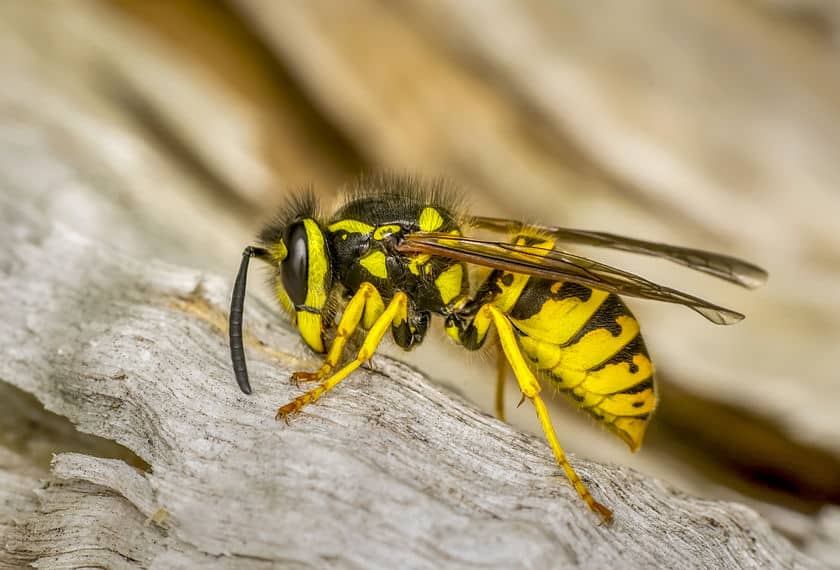Here you will find 30 of the main varieties of bees and wasps. There are many species within each category below but each will fit into one of the types described here.
Bees
Anthophora bees
Anthophora is a genus of bees from the same family as the honey bee. Despite this, they are solitary and do not produce honey or wax. The majority of species within this genus are ground nesters and will either have nests on their own or live in communities with other bees of their species. Unlike many solitary bees, the larvae do not spin cocoons around themselves. Their underground cells are lined with a waterproof coating made of secretions from the mother bee’s glands. Although the 450-odd species comes in a variety of colours and patterns, many are strikingly noticeable by their striped abdomens.
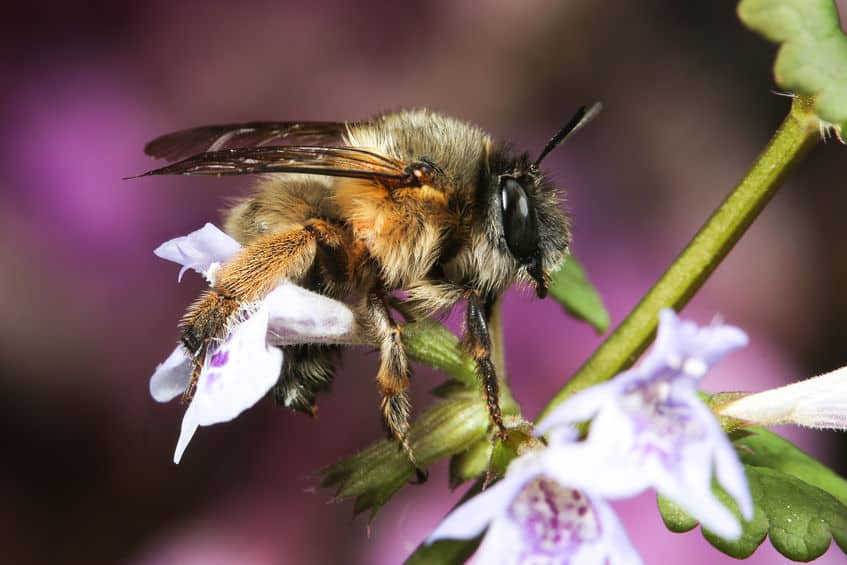
Bumblebees
These well-known bees are easily identified by their rotund bodies and long hair. The genus that covers all bumblebees is known as Bombus, which means “humming” or “buzzing” in Ancient Greek. These fuzzy pollinators are social bees, and have workers, drones, and a queen. Unlike honey bees they are typically ground nesters, often making homes out of abandoned mouse burrows. Their colonies are also much smaller than that of a honey bee; a strong nest can number around 400 bees. While they do not produce honey, bumblebees do make wax, and will use the substance to create cells for their brood. Additionally, the colony’s queen will be the one to choose a nesting site, help forage, lay eggs, and care for brood. Read more about bumblebees here.
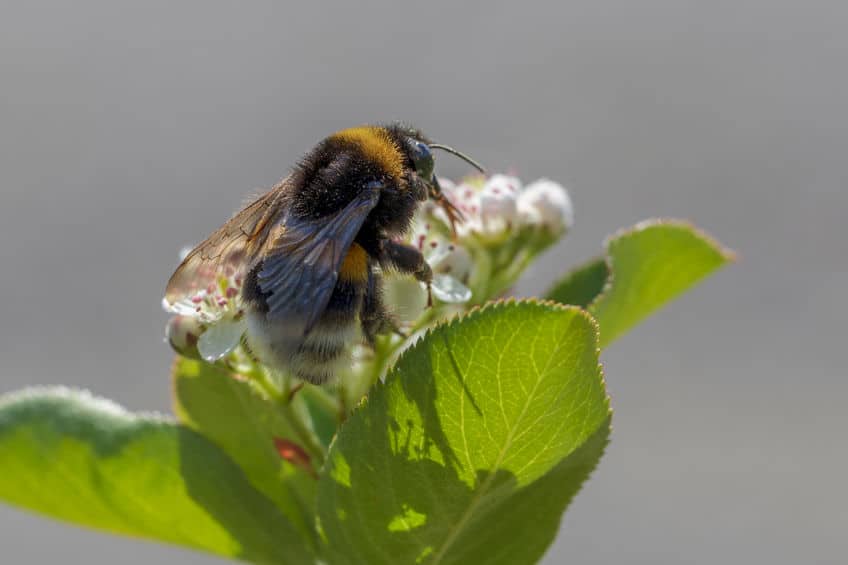
Carpenter bees
Some 500 species of carpenter bee exists, and as their name suggests they burrow nests in dead wood. They are solitary insects that resemble bumblebees, but with a stark difference; a shiny, hairless abdomen. The carpenter bee’s affinity towards wooden burrows can paint them as a nuisance, as the siding on houses and buildings can be potential nesting sites for them. Although solitary, they may live in communities, which can result in tunnels several meters long! Compromising the structural integrity of buildings can be serious. An easy preventative solution does exist, though: carpenter bees will steer away from painted wood. Read more about carpenter bees here.
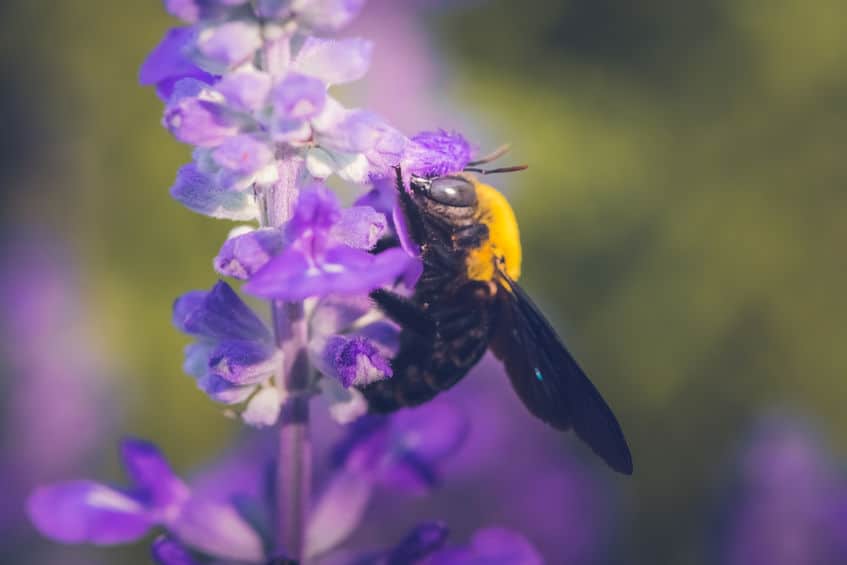
Cuckoo bees
Named after the cuckoo bird, these bees stem from a variety of different families, and do not refer to one specific lineage. The bees themselves are not great pollinators; they visit flowers specifically to feed off the nectar, and their near hairless, wasp-like bodies pick up very little pollen. They also have no need to collect pollen, as they will invade into the nest of a solitary bee and lay an egg on the pollen ball deposited by the host. The larva will consume the pollen and the host larva, if its mother hasn’t already. Cuckoo bees are more common than you may expect; they represent roughly 10% of all bee species.
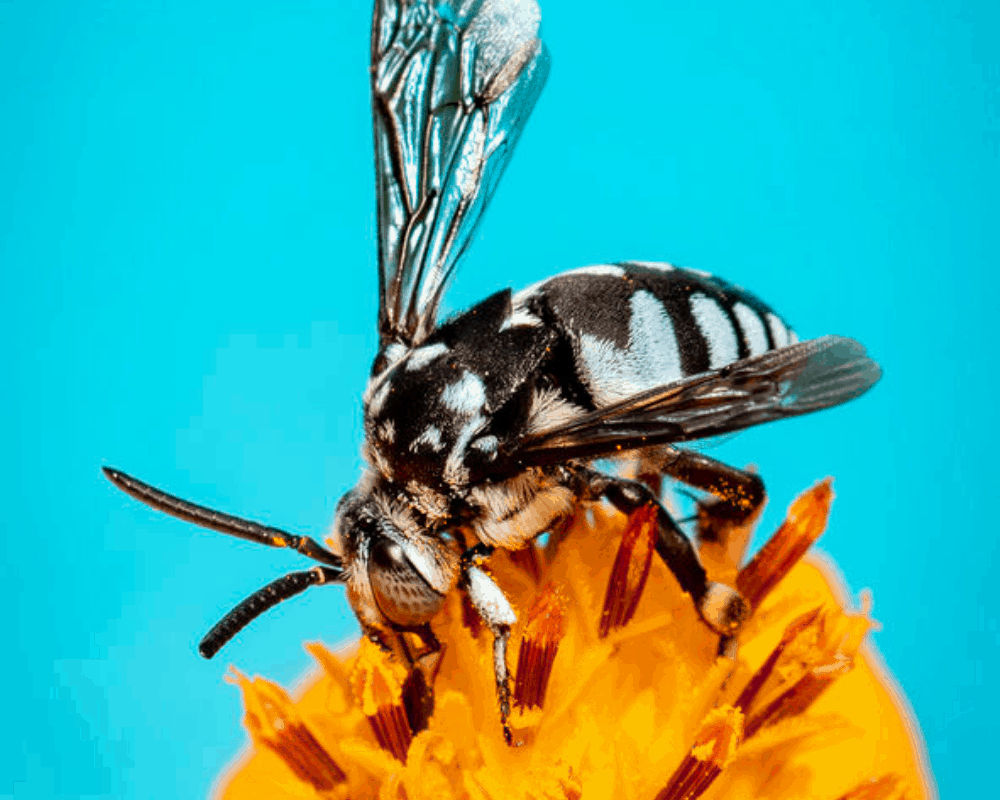
Diadasia bees
Most bees prefer a variety of pollen sources in order to maximize on the nutrients from various plants. Diadasia bees, endemic to Central and North America, are an exception. They are oligolectic, meaning they source pollen from a select few plants. In this case, the diadasia bees have a preference towards mallow and cacti species. As well, some of these species are “chimney” bees, meaning they have protruding entrances to their tunnels, which they use gland secretions to hold together and keep waterproof. Although solitary, these bees often live in communities and can build hundreds of nests out of the ground or on the side of cliffs, making for impressive structures.
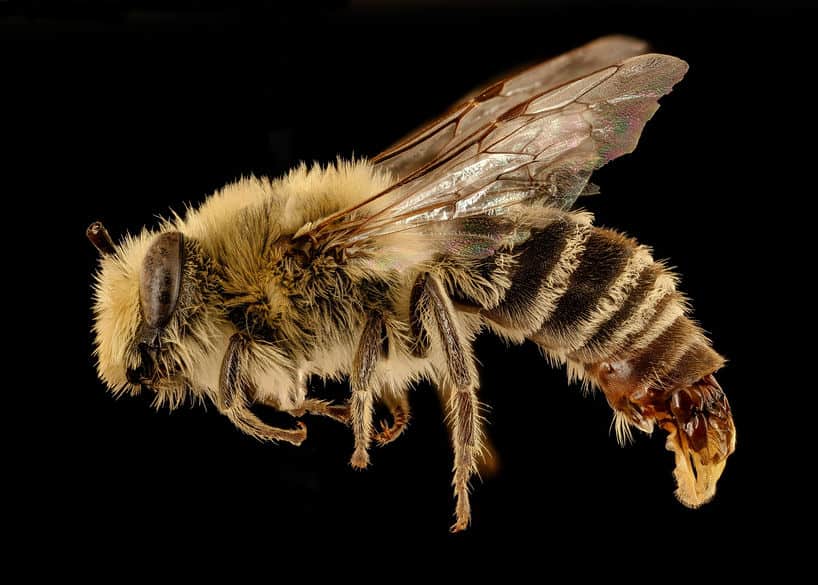
Digger bees
It is important to note that “digger” bees refers to the behaviour of many bee species, rather than a particular genus or family. The majority of digger bees are ground-nesters, and will live in communities but are technically solitary; the females are in charge of their own nests and are independent for collecting pollen and nectar. The primary advantage of living in close proximity is likely for defense and mating purposes, although most digger bee species are not known to be aggressive. Their stings, as with most solitary bees, are less painful than that of a honey bee or wasp.
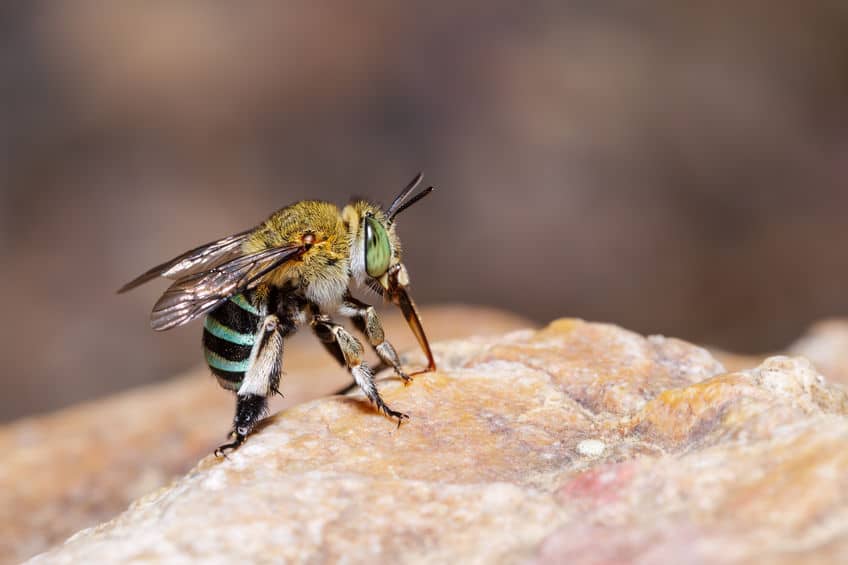
Honey bees
Perhaps the most infamous of bee species, the honey bee is popular for the production of honey, wax, propolis, and royal jelly. They are also widely used for pollination in orchards and other outdoor growing operations. Despite this, the genus Apis, which covers all honey-producing bees, consists of a mere 11 species, compared to the roughly 20’000 global bee species. Their hexagonal cells are instantly recognizable and are an ingenious shape in which to maximize space in a hive. These cells are used for the storage of honey and pollen to be consumed during the winter months and to act as chambers for the queen to lay eggs and brood to develop in. Read more about honey bees here.
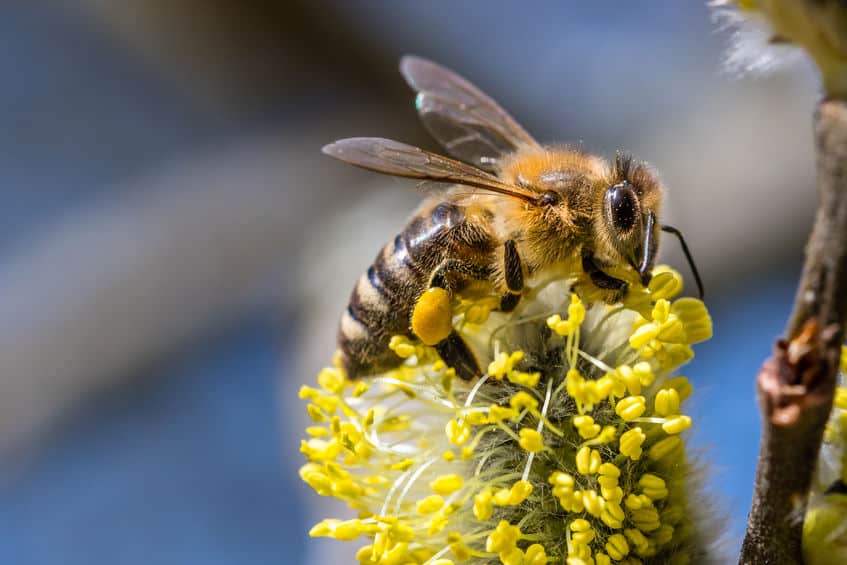
Leafcutter bees
Covering a variety of species, leaf cutter bees make perfect half-moon notches in leaves. Unlike snails and caterpillars, they do not eat the leaves but instead fly back with their newly acquired piece of foliage to build nests. Leaf cutters will find tunnels such as in old plant stems or rotten wood and line the interior with leaf pieces. She will leave a ball of pollen, lay an egg, and then section off the area with more leaves to create a cell before repeating the process. After consuming the pollen, larvae will form a cocoon to pupate within. Leaf cutter bees are often seen as a nuisance as they ruin the visual aesthetic of garden plants as they snip chunks of leaves away. Despite this, they are fantastic pollinators, especially in alfalfa fields. They keep close to their nests, foraging only around 100 metres away at the most.
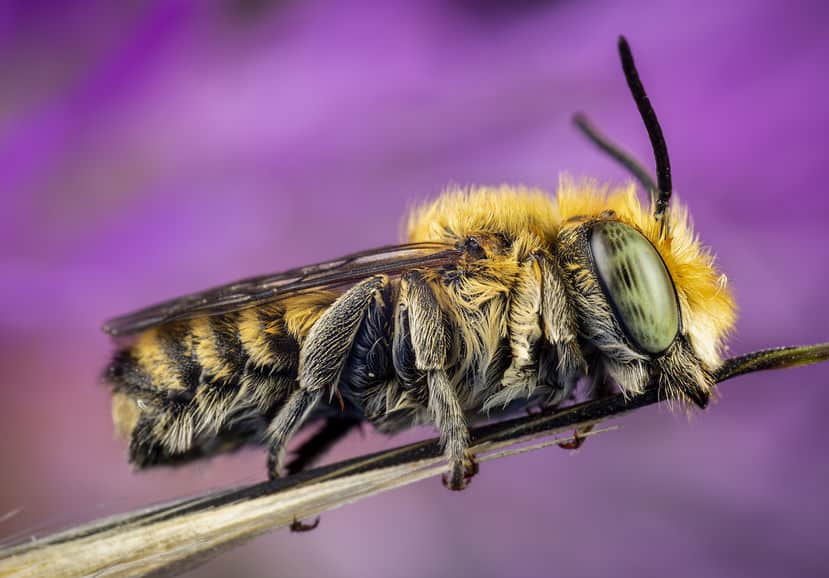
Long-horned bees
Named after their exceptionally long antennae, these bees are solitary but have aggregate nests. The males typically have much longer antennae than the females and can be almost the length of their bodies. The males also sleep in aggregations outside of the hive, which may contain hundreds of bees huddled throughout the night. The females will sleep in their individual nests with their brood, which is dug into the ground in a similar manner to digger bees. Despite how fascinating this group of bees is, little information has been properly studied on them.
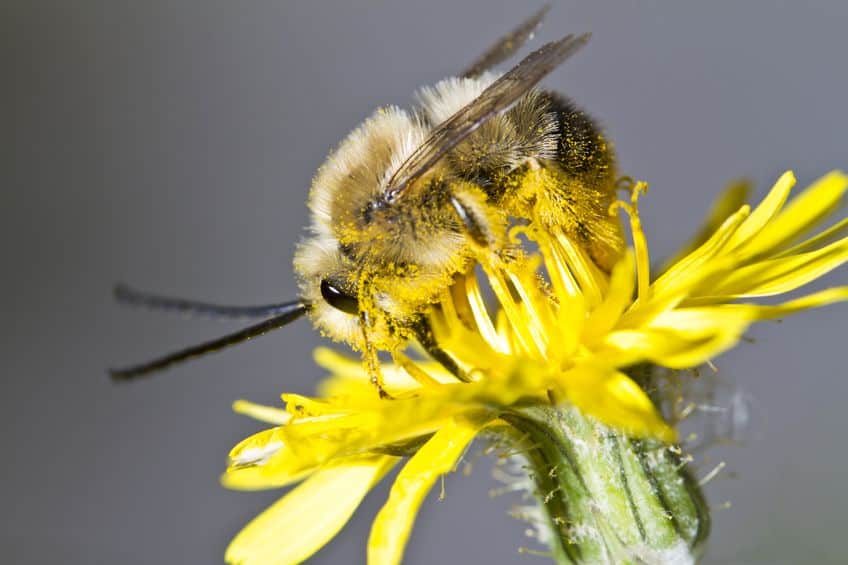
Mason bees
A popular solitary bee, the mason bee is known for its use of mud to create cells. Wild nests can be made out of various cavities, including hollow stems, cracks in fallen logs, and so on. They have even been reported to nest inside empty snail shells. Most mason bee species only live for around six weeks—two weeks for the males. Mason bees stay close to their nests, flying little more than 100 meters away, but are fantastic pollinators. A single mason bee can do the work of several hundred honey bees in an orchard and is found to be far better at cross-pollination. When the female lays eggs, she can choose the sex of the egg and will lay females towards the back of the tunnel or crevice. The males will be towards the front, as they will hatch out earlier. Read more about mason bees here.
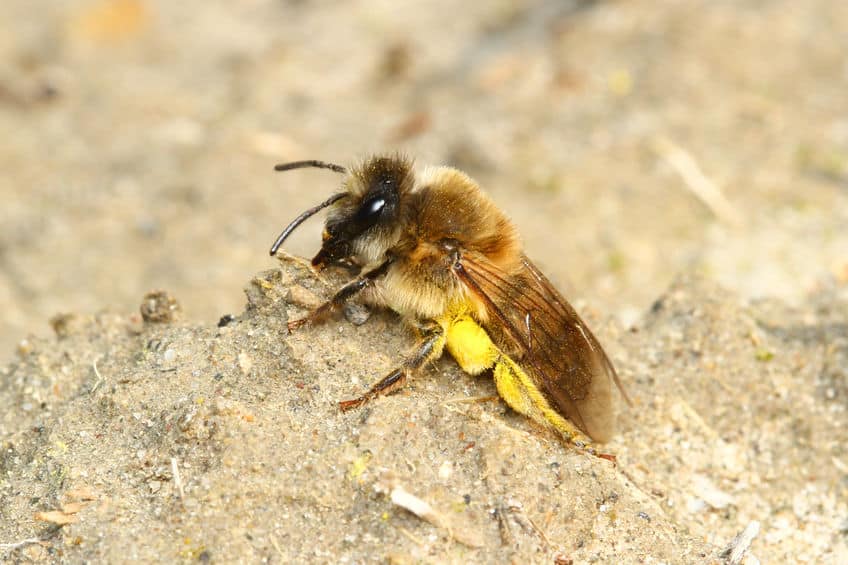
Mining bees
The genus Andrena is comprised of all mining bees, and contains over 1’300 species worldwide. Similar in behaviour to digger bees, the females will create nests in the ground to lay her eggs. They have a preference for sandy soils and will create their nests under the shade of shrubs or bushes to protect the brood from the weather. Like many solitary bees, they tend to nest in close proximity to one another. Mining bees are smaller in size than digger bees, but many times the names are used synonymously. They are docile and highly unlikely to sting unless provoked.
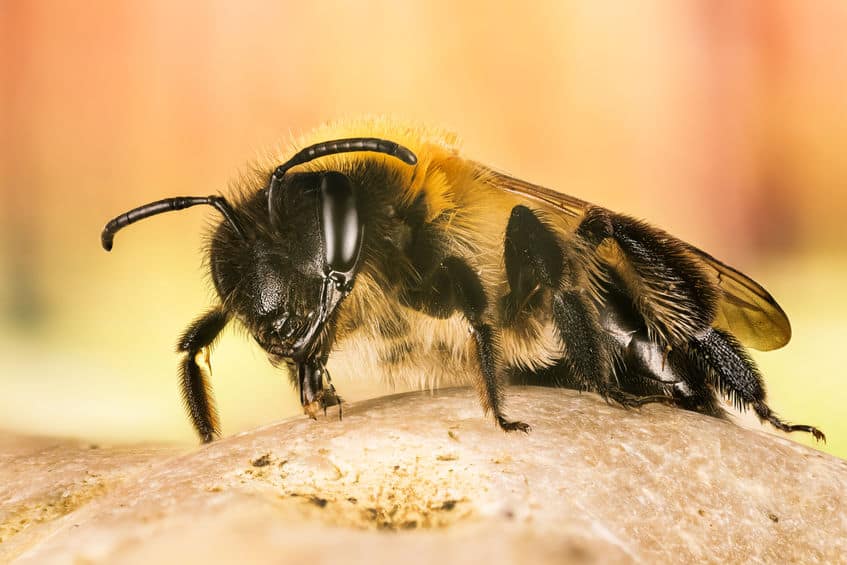
Orchid bees
Found only in South and Central America, orchid bees—also called euglossine bees—are endemic to rainforests and involve roughly 250 species. They are perhaps some of the more bizarre types of bees, both in behaviour and appearance. Orchid bees are less hairy than your typical bee, and have incredible metallic colours in blues and greens, but may also be purple or gold. Their tongues are often double the length of their body in order to reach deep into the nectar-producing glands of orchid flowers and other similar plants. The majority of the species are solitary, but unlike other bees the males exhibit particular mating rituals. Orchids produce several different scents, as do many plants and fungi within rainforests, and the males will scrape up these scent volatiles and will perform mating displays using their collected scents to attract a female. The nests can be tucked in crevices, stems, in wood, and so on, and are typically made of mud and resin.
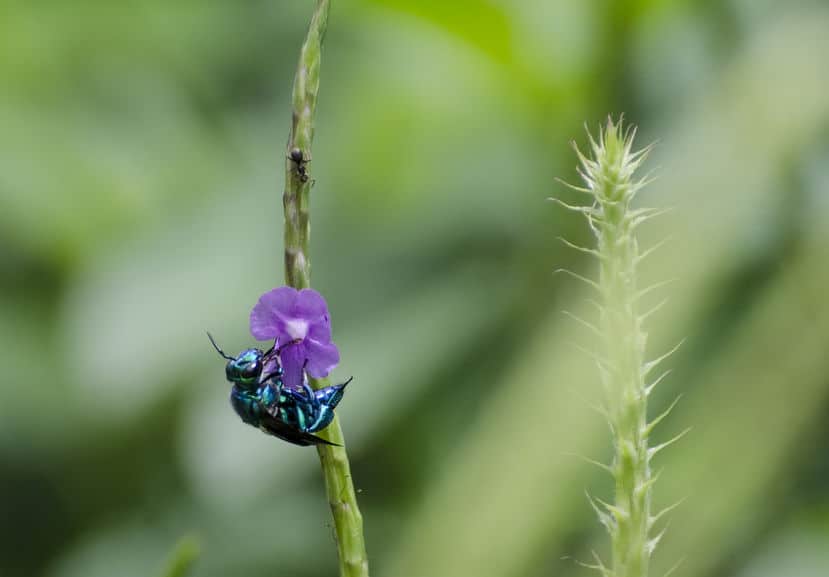
Plasterer bees
Referring to the family Colletidae, plasterer bees are thus named for the way in which they use secretions from their mouths to smooth out the cell walls within their nests, which resemble cellophane once dried. The substance is waterproof and helps to protect their young against disease. They are ground-nesters, but unlike similar soil-dwellers they leave a liquid pollen mixture rather than a dry ball, and will lay their eggs on the side of the cell wall. Many species within this family are also nocturnal, and will be active either throughout the entire night or during the twilight hours before sunrise and after sunset.
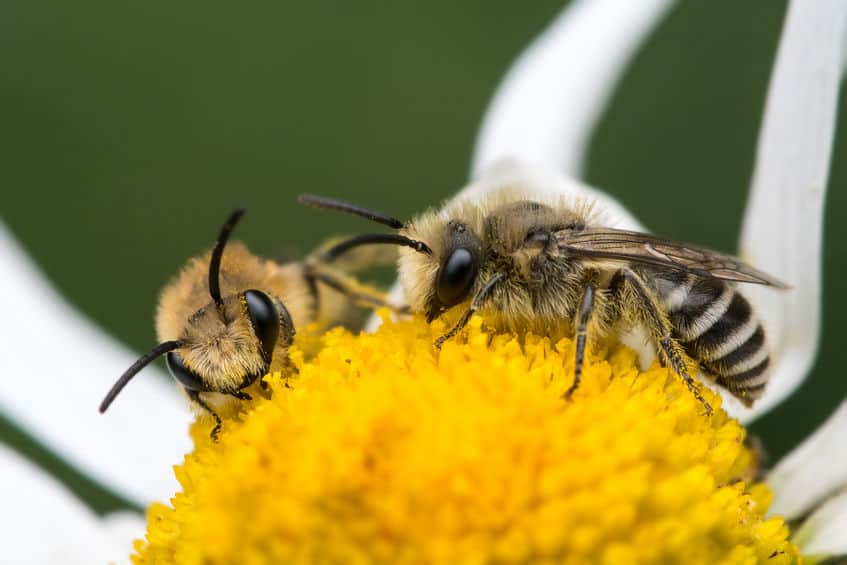
Stingless bees
Although the name of this insect may bring some comfort, it is a bit of a misnomer; their stingers are too small to be an adequate defense, but for some species, their bite can pack a punch. Although they are social bees that form hives, they have many differences compared to the honey bee. For instance, as honey bee larvae develop, nurse bees will continuously feed them a mixture of pollen and nectar, and then cap off the cell with wax once they are ready to pupate. Stingless bee eggs are laid on top of a pollen ball and the chamber is sealed, allowing them to develop in much the same way as solitary bees. Stingless bees do produce wax, but it is often mixed with tree resin to create a substance known as cerumen. They also do produce honey, but it is runnier than typical honey and not produced in as great of quantities. In honey bees, nectar is passed from mouth to mouth among the workers to reduce the water content until it reaches a thick consistency. Stingless bees will spin the nectar in their mouth to reduce the water before storing it, a method that is more efficient for a small colony but results in a thinner viscosity. Aboriginal Australians have been using stingless bee honey for generations, where it is known as “sugarbag”.
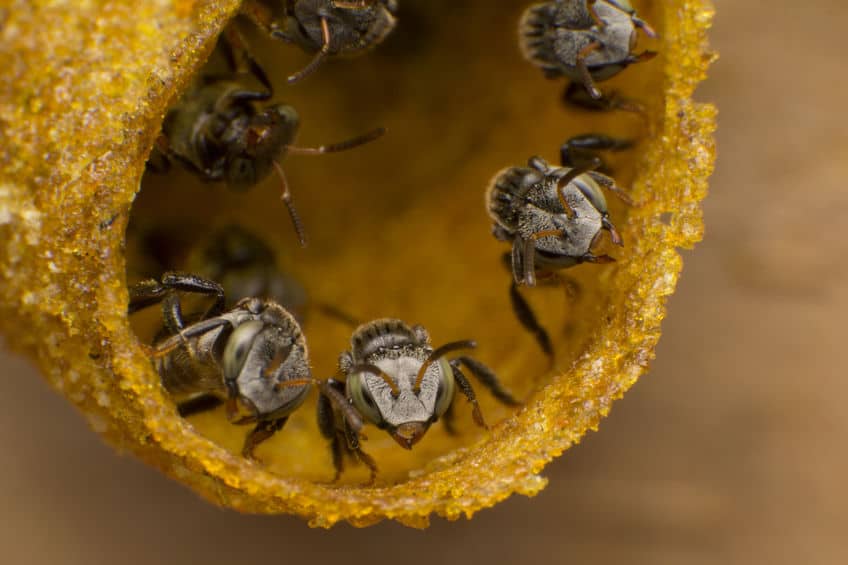
Sweat bees
Falling under the family Halictidae, these bees are typically very small. Their common name stems from their tendency to lick sweat off of mammals, including humans. Species vary in their living situations; some are solitary but live in close proximity, while others are eusocial and live in one nest with a mated female that acts like a queen. The majority of sweat bee species are ground-nesters, but some create nests in wood from fallen logs. A few species are also kleptoparasites, where a female will invade into a larval cell of another bee, consume the host egg, and then lay her own in its place.
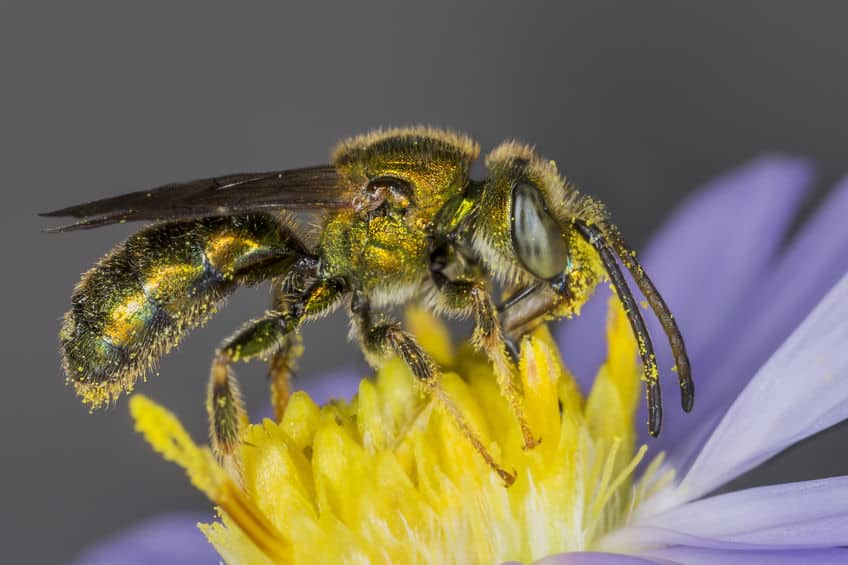
Wasps
Cockroach wasps
Appearances can certainly be deceiving with these wasps, as they resemble that of an ant, and often with beautiful metallic blue or green exoskeletons. Cockroach wasps are from the family Ampulicidae, and although species vary, their method of targeting prey is usually similar. Cockroaches, as the name suggests, are the unfortunate victims of these wasps. The wasps tend to target nerves that, once stung, render the insect paralyzed. She then drags the cockroach into her burrow and lays an egg on it. Once the larva has hatched, it will consume the still-living cockroach. The roaches do have one preventative defense method, however: a powerful kick to the wasp’s head. Read more about cockroach wasps here.
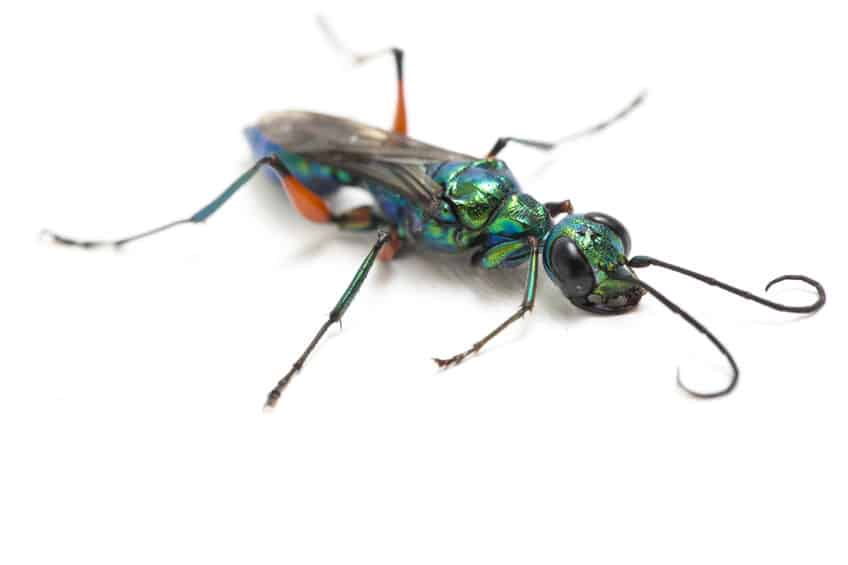
Cuckoo wasps
Similar to that of the cuckoo bee, the cuckoo wasp is a kleptoparasite that will target a host’s nest and lay an egg in a cell. Once hatched, the larva will consume the host larva, as well as any food left behind. Cuckoo wasps are from the family Chrysididae and have stunning metallic colors on their bodies. They are solitary and favor hot, dry climates and sandy soils. Some species of cuckoo wasps have been identified as being able to curl up in a defensive ball when being attacked by host wasps. Read more about cuckoo wasps here.
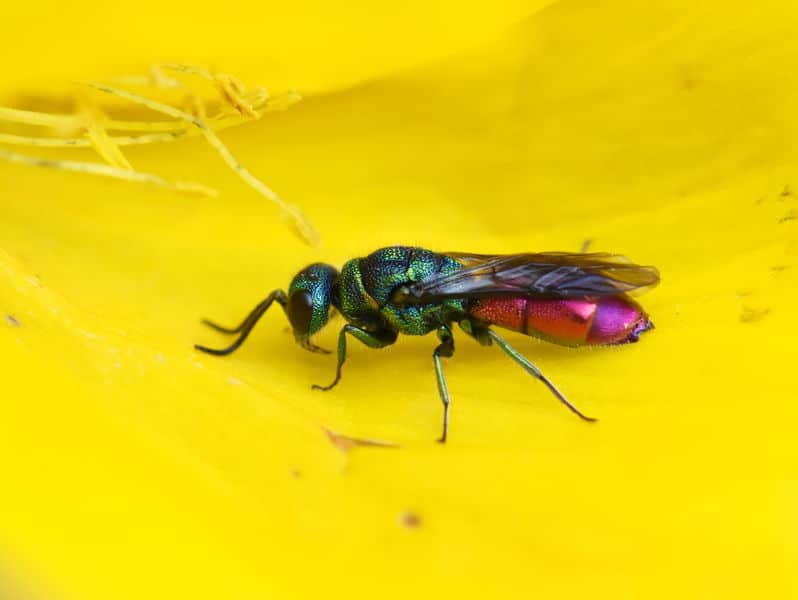
Digger wasps
The genus Sphex consists of all digger wasp species, of which there are over 130. They dig burrows in the ground, sometimes using pre-existing tunnels abandoned by other insects or made naturally. The digger wasp will utilize the toxins in its stinger to paralyze prey such as crickets and will fill its nest up with often living but subdued insects. Eggs are then laid within the tunnel and the emerging larvae will feed off the insects throughout the winter months. Despite their grotesque lifestyle, digger wasps tend to be non-aggressive and will only sting if provoked. Read more about the golden digger wasp here.
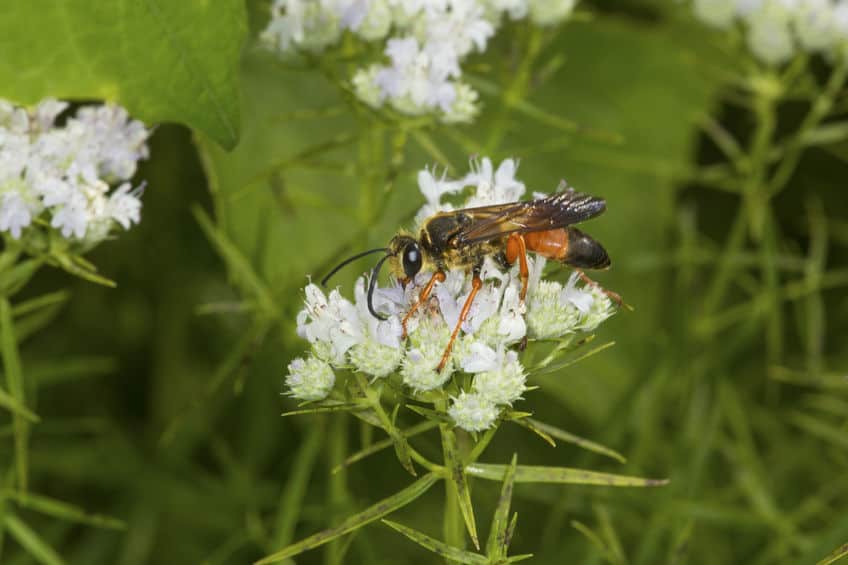
Gall wasps
Unlike the previously mentioned wasps, gall wasps parasitize plants. Although the precise method of it occurs is unknown, the wasp lays her eggs within a plant, and in doing so releases a chemical, virus, or some other means that triggers the plant to produce a gall. The developing larvae consume the nutrient-heavy juices that the plant produces and take advantage of the protection provided by the gall. That being said, gall wasp larvae are not immune to being parasitized by other wasps, which can seek out galls and overtake the host. It is estimated that roughly 70% of gall wasp species target oak trees as their host plants.
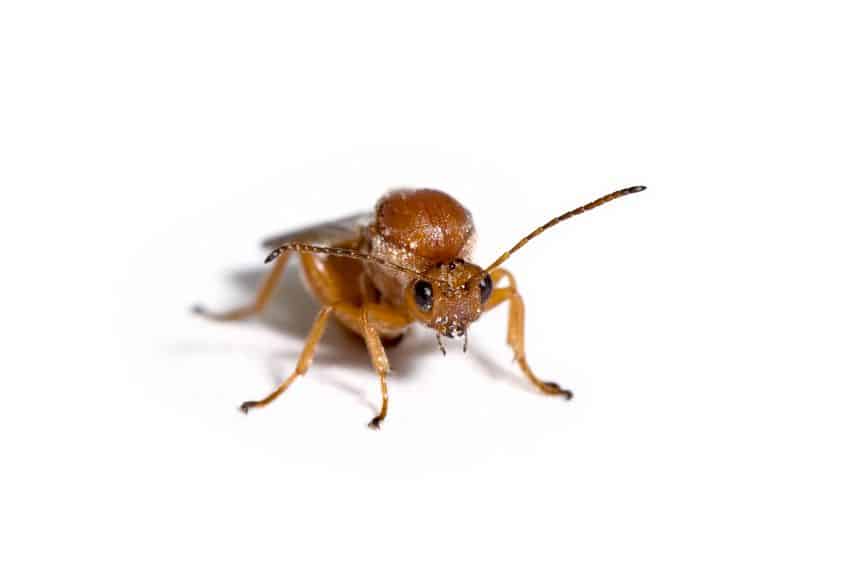
Honey wasps
The honey wasp is one particular species, rather than a genus or family like the previous insects. Brachygastra mellifica, also known as the Mexican honey wasp, is one of the very few wasp species that produces honey. They are social wasps with strikingly smooth bodies and vivid black and yellow colouring. Their nests are made of paper, and unlike honey bees, they almost always have multiple fertile queens. They are also thought to be some of the first insects to pollinate avocados, and combined with their honey production they are valuable creatures in Mexico.
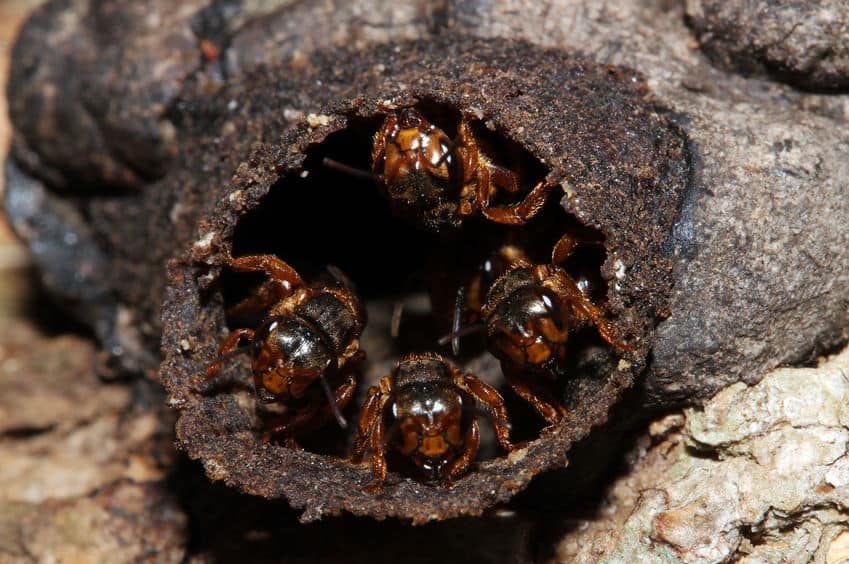
Hornets
Commonly known for their large size and aggressive behavior, hornets are social wasps with papery nests and are headed by a queen. Much like a honey bee, her purpose is to lay eggs while female worker wasps forage. Males lack a stinger and are typically non-aggressive; their purpose, like that of most male bees and wasps, is for reproduction. Hornets have terribly painful stings due to a high volume of acetylcholine in their venom, which acts by triggering the pain nerves. They are also capable of stinging multiple times. The world’s largest hornet is the Asian giant hornet, known for its voracious appetite for honey bees and its deadly stinger, killing hundreds of people across Asia every year. Alongside insects as sustenance, hornets also regularly feed on rotting fruit and certain tree sap. Read more about hornets here.
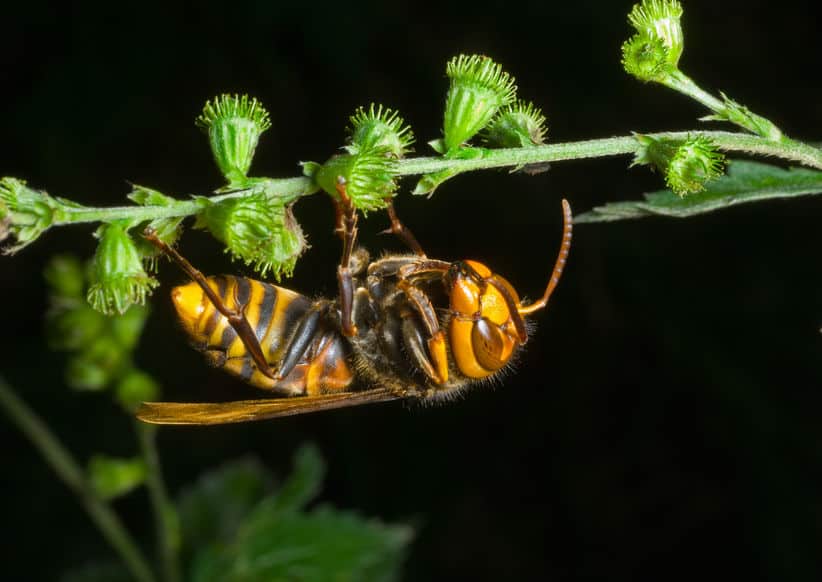
Ichneumon
Wasps from the family Ichneumonidae represent a massive number of species—roughly 25’000 worldwide, and that only includes confirmed species. Many female ichneumon wasp species have an elongated ovipositor that they use to lay eggs in or on their hosts, and will often inject venom alongside the egg. Although the ovipositor looks formidable, only a few species within the family actually uses it for defense. Ichneumon wasps are parasitoids, with their most common host being creatures such as butterflies, beetles, wasps, spiders, caterpillars, and bees.
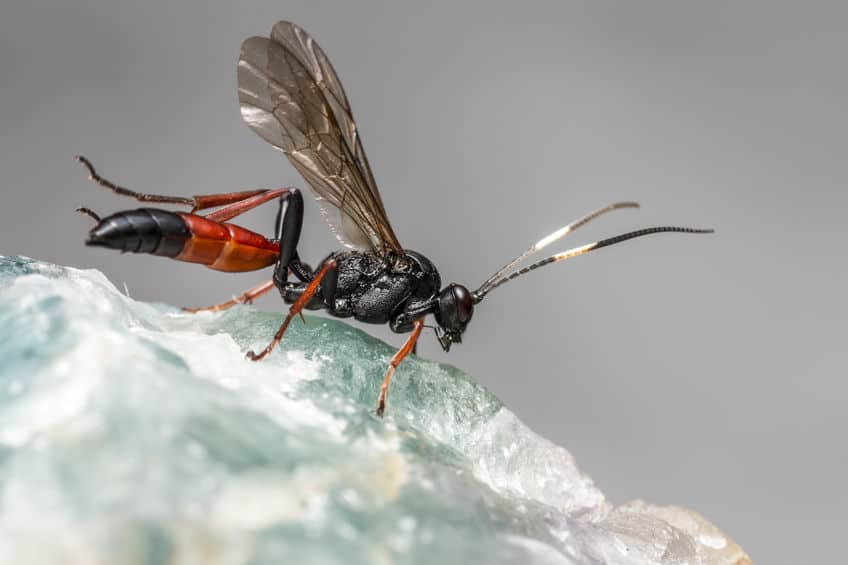
Mud wasps
Also known as “mud daubers”, the mud wasp is a solitary parasitoid. In the vast majority of Hymenoptera species, the males are of little use except for that of reproduction, but in the case of mud wasps, they have been observed guarding nests and bringing spiders for the young to consume. Their primary food source for larvae tends to be small spiders, in which they will shove several of these paralyzed arachnids into the nest. Although the mud wasp includes various species with their own nest formation habits, a notable species is the organ pipe mud dauber, which creates long mud tubes aligned side by side in which to lay her young. Mud wasps tend to be relatively docile, and are unlikely to sting unless provoked. Read more about mud dauber wasps here.
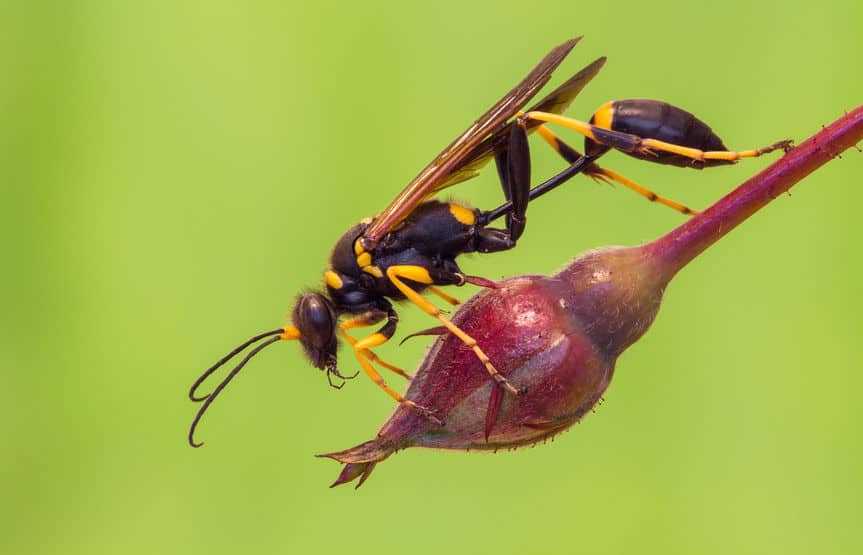
Paper wasps
These common insects are well known for their nests, which they make using a mixture of saliva and wood fibers. Although frequently confused with yellow jackets, paper wasps have a distinct nest; the bottom is open and cells are visible, while the yellow jacket nest is typically enclosed. These social wasps are territorial, but not known to be overly aggressive. Their stings can induce a strong reaction in allergic individuals, but overall paper wasps are deemed to be beneficial in gardens. Not only do they feed on the larvae of garden pests, but the adults are nectar feeders and inadvertently pollinate in the process.
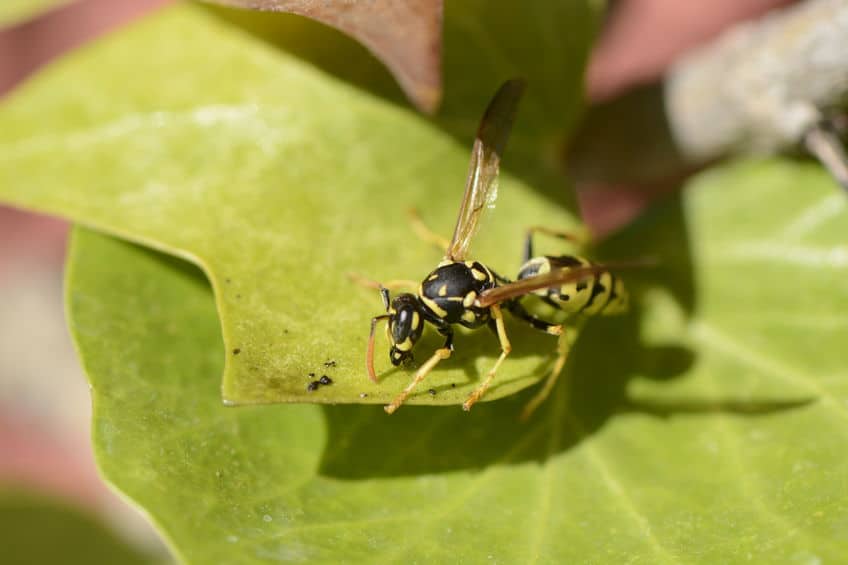
Potter wasps
Also known as mason wasps, the potter wasp is solitary and makes its nest out of mud. Some species of potter wasps build into crevices or previously used nests, while others create nests made into the shape of a pottery vessel, while contributes to their choice of name. They are typically large in size and are nectar-feeders as adults, but the larvae feed on caterpillars paralyzed by the mother wasp. Each “pot” contains live prey and a single egg, and the adult will not defend it once it has been completed. Potter wasps are rarely aggressive towards humans but do deliver a painful sting if aggravated.
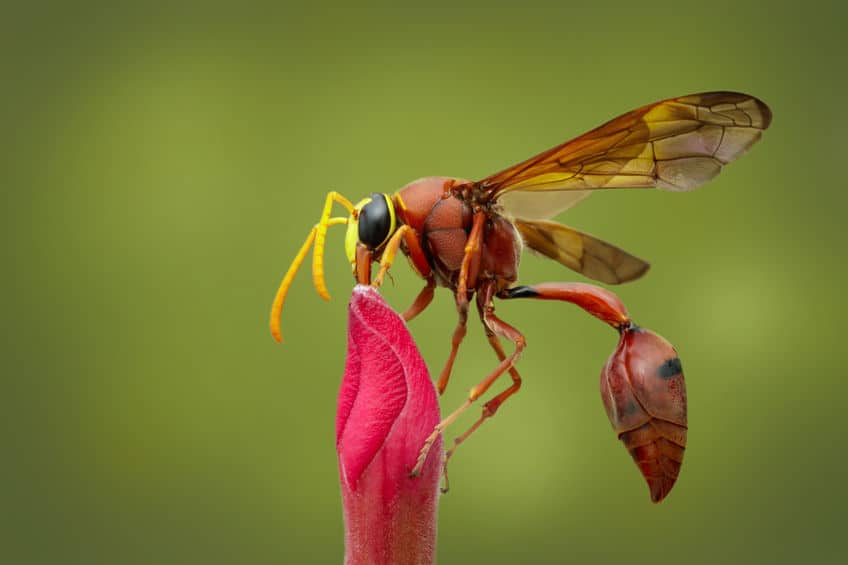
Sand wasps
Consisting of wasps from the tribe Bembicini, these ground-nesters pose a surprising difference to other wasps. The sand wasps will create short burrows in which they will paralyze prey and place inside for their larvae to feed on. In suitable locations, nesting areas can be very densely populated by these solitary wasps which make them vulnerable to being parasitized. The unique trait concerning sand wasps is that some have been observed to eat their own parasites. Adults typically feed on nectar from flowers and bring flies for their young. They are strong hunters and will capture flies and sting them mid-air. Read more about the red-banded sand wasp here.
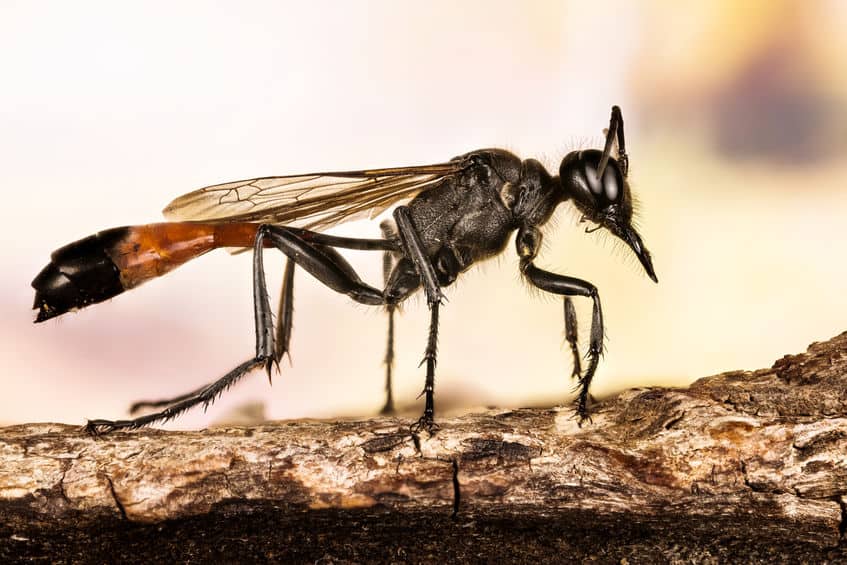
Scoliidae wasps
Representing roughly 560 species worldwide, scoliidae wasps are solitary ground-nesters. Their prey of choice is scarab beetle larvae, which the female will sting to paralyze them, and then lay an egg on the subdued prey to feed on once it has hatched. Occasionally she will move the beetle larva into a separate chamber first, but often the burrow created by the laying scarab is sufficient. One particular species of wasp engages in an unusual form of pollination for a certain orchid species; the orchid flower resembles the female wasp, and as the male attempts to mate with it, he is covered in pollen. After leaving in search of a proper female, he will come across more of these orchids, and in repeating the process will pollinate the flowers. Read more about the giant scoliid wasp here.
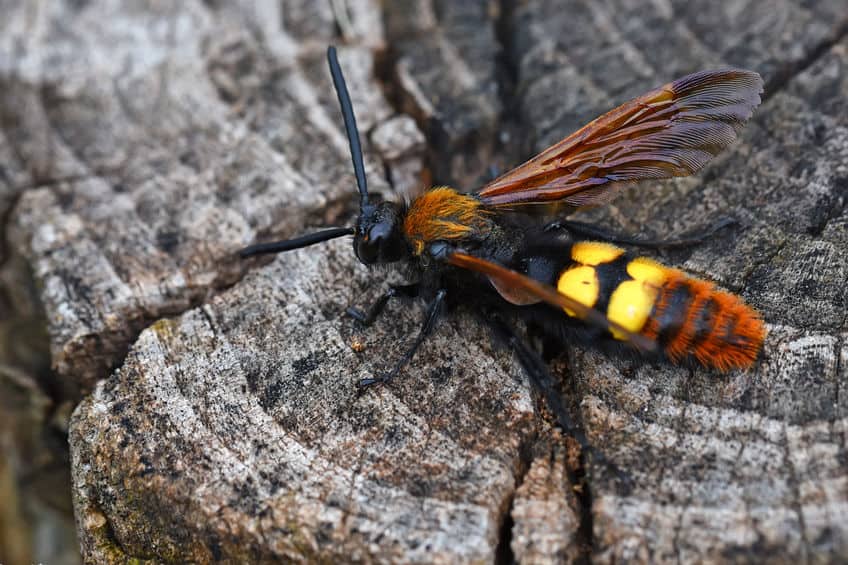
Spider wasps
Known for making spiders as their primary prey, these wasps are from the family Pompilidae, and include roughly 5000 species. Nearly all wasps are solitary, though some may live in aggregations. The female will find and sting a spider to paralyze it, and then drag it back to a burrow and lay an egg on its abdomen. She then seals off the chamber and cleans up the area around it to hide any evidence of the nest. One particular species of spider wasp will even place dead ants around the burrow, and their chemicals will hide the scent of the larva from parasitoids. Although spider wasps are usually not aggressive, their venom contains a number of neurotoxins that cause immense pain. Tarantula hawk wasps have one of the most painful stings known to humans. Read more about tarantula hawks here.
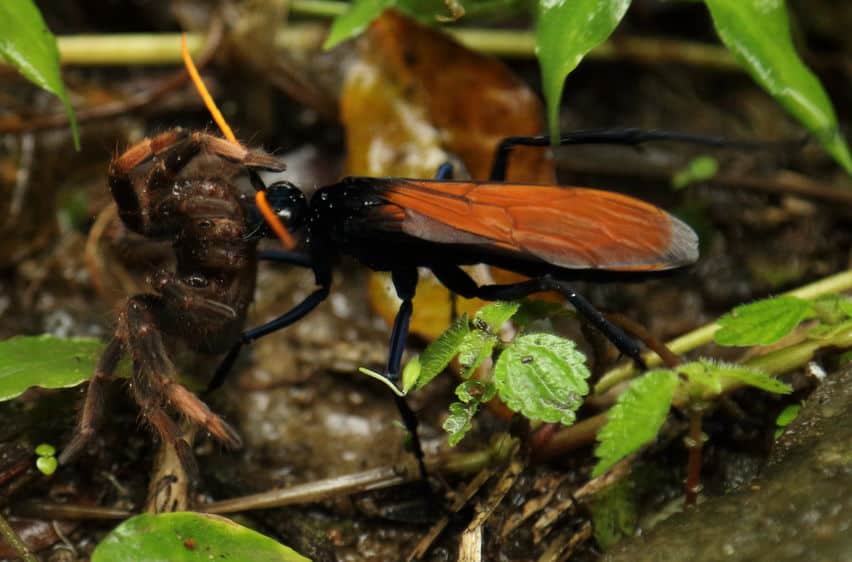
Velvet ant wasps
These unusual wasps are wingless in females and resemble large, furry ants. Their hair is often bright colored orange or red to warn predators. Some 7000 species of velvet ant wasps come from the family Mutillidae, and are known for having extremely painful stings that can last for half an hour. They are known to primarily parasitize other ground-nesting bees or wasps by laying a single egg alongside a host larva, which it will consume once hatched. In addition to their terrible stings, velvet ant wasps are also known for having an extremely tough exoskeleton that protects them against attack. Read more about velvet ants here.
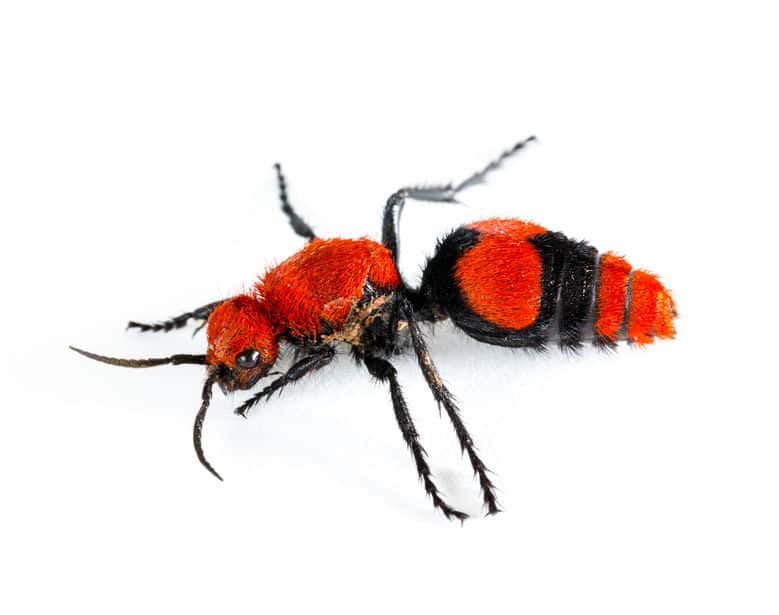
Yellow-jacket wasps
Popularly known for their aggressiveness and visual similarity to paper wasps, yellow jackets are social insects and will create hives numbering up to 5000 members. Their nests are built with a mixture of saliva and wood fibers, but unlike the paper wasp, their hive is enclosed and can be massive in size. The hive consists of a queen, sometimes a few queens if the colony is large enough, whose primary responsibility is laying eggs. Males die soon after mating, and female workers act as foragers for the larvae. Although the adults feed on nectar and fruits, the larvae require protein from insects or meat. Read more about yellow-jacket wasps.
